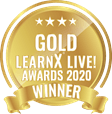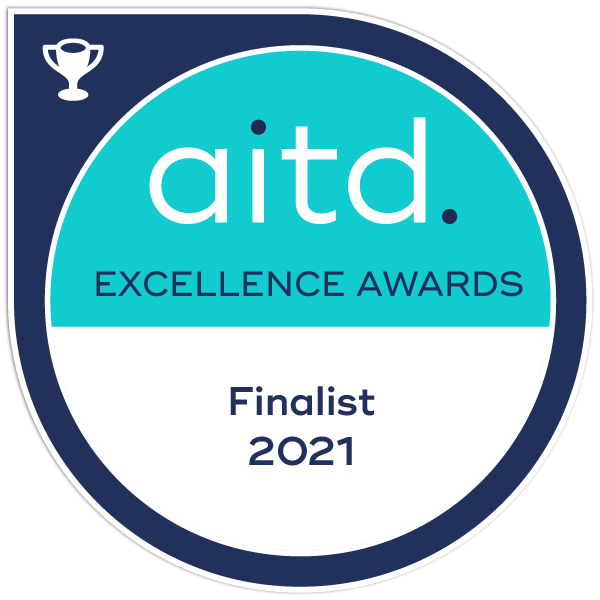THE SKILLS OF GREAT HYBRID LEADERS
Chris Morfesse • November 8, 2022
WHAT'S CHANGED, AND WHAT'S NEEDED NOW
The role of a leader has changed significantly over the past three years, requiring leaders to adapt and evolve how they lead, and for organisations to redefine what effective leadership entails.
Ambiguity and change driven by the pandemic and the shift to remote and hybrid working brought with it a range of well documented challenges. Many of these were novel, meaning previous rulebooks and policies were thrown out and leaders needed to navigate significant decisions based on the changing needs of individuals and teams. Central to this was discovering how to balance productivity and employee wellbeing – and while not an unfamiliar challenge, the context of a global health crisis, significant uncertainty, and severe market disruption certainly was.
Previously, flexible working arrangements, leave requests, and health and safety were largely governed and directed by policy. These were managed collectively by HR and experienced at a central workplace where leaders could lean on other functions and clear guidelines to manage these types of performance and work-related issues.
Very quickly though, leaders found out that new issues and questions, previously rare or not encountered before, now needed to be addressed daily. Leaders were expected to figure out how to ensure performance and well-being were effectively managed, while maintaining alignment to organisational culture, and navigating new work structures and individual circumstances. The added pressure of articulating a clear vision and maintaining motivation through continuous uncertainty perhaps presented the biggest tension of all.
The challenges were immense and according to Gallup, led to escalating burnout rates among leaders throughout the pandemic.[1] It also exposed many as not having the tools to lead in this new workforce dynamic. Recent research by Gartner found that less than half of employees and only 35% of HR leaders agreed that leaders in their organisations had the capabilities required to cope and succeed in the future.[2]
So what’s changed in terms of leadership over the past three years?
Hybrid work is here to stay with at least 40% of employed people regularly working from home [3] and 67% stating they would look for a new employer if flexible working arrangements were dropped. [4]
Many organisations have now accepted flexible working policies as a non-negotiable when it comes to retaining and attracting staff, which is heightened in a tight talent market. This requires new practices for leading and managing remote and hybrid teams, and organisations have a responsibility to support leaders through these changing demands.
- Location matters in managing performance and connection
Leading a remote or hybrid workforce creates a different dynamic for managing performance. With reduced visibility of day-to-day behaviour, performance monitoring becomes more reliant on outcomes. Many organisations have adopted the position that as long as the work gets done, it doesn’t matter where (and to a lesser extent how) it gets completed. Difficulty can emerge when work becomes increasingly transactional, and this represents a critical risk to those wanting to retain elements of workplace culture and connection now that mechanisms for meaningful collaboration require a rethink.
Within organisations, different perspectives on when (and for how much time) teams should connect will need to be navigated. Leaders will need to thoughtfully design what happens during that connection time to earn the commute, and be equipped with a clear narrative as to why it matters. Managing and leading this ‘in office’ experience and what it means to be at work will be a new planning activity for ongoing focus, and demand a new degree of emotional intelligence to create the conditions for performance and health.
The importance of connection, both to the work and between team members, is even more crucial when considering the impact on talent retention. Research from 2021 found that 57% of workers felt less connected to their co-workers when the work from home shift happened [5]. We also know that building strong relationships at work is a significant driver of job satisfaction [6] and conversely feeling disconnected from one's colleagues is a significant driver of employee attrition. Aligned to this is the view that lonely employees have a higher risk of turnover, lower productivity, more missed days at work, and lower quality of work.[7]
How leaders design meaningful connections, and how effectively this is leveraged for both engagement and performance, will be a critical task as employee expectations and the competitive talent market persists.
- Communicate often and honestly
With employees spending more time working remotely, opportunistic catch ups and conversations are less frequent. This requires leaders to be increasingly proactive in making themselves available, and establishing consistent individual and team check-in rhythms. According to a Gallup study, a 15 minute team member check in, once per week, is associated with higher engagement and a lower likelihood to quit. And it doesn’t matter whether leaders are checking in face to face, over the phone or via a chat app.[8]
With less face-to-face time, leaders need to be increasingly transparent, thoughtful, and frequent with communication to ensure teams feel connected and informed. Those who don’t are at risk of creating a disconnect between employee and employer, which can lead to increased feelings of stress, ’quiet quitting’ and burnout.
Physical distance can transform into strategic distance, if leaders don’t increase their time making meaning for team members and creating alignment between individual activity and strategy. Recognition and celebrating success also become increasingly important in the absence of informal, daily cues regarding on track / off track performance. - Focus on team building, trust, acceptance, and collaboration
More than ever, leaders will need to take an active role in team building and collaboration and creating an environment of trust and acceptance. Central to this is the ability to foster psychological safety where experimentation and speaking up is safe for team members, and diversity is celebrated as a source of competitive advantage.
Team building and collaboration in hybrid work environments takes thoughtful planning, dedication and empowerment of team members to discover how they can best collaborate and engage with their teammates. Finding the right balance between coaching, managing, and providing space to explore will be accentuated even further in the new world of work.
Capabilities of effective hybrid leaders
Using the Spring Point LeaderX Framework, we looked at defining which core capabilities are necessary for successful hybrid leaders, and what organisations should be looking for when it comes to defining leadership strategy, recruiting high calibre talent, or initiating development activities.
Here are 4 critical leadership capabilities for leading a hybrid workforce.
1. Aligns people to purpose
Leaders need to define and articulate a compelling organisational purpose, and help team members discover their personal connection within it. This is not a set and forget activity, but requires ongoing dialogue and reinforcement. By clearly linking work tasks to the purpose of the organisation, leaders can create meaning for team members, and drive commitment and connection, regardless of ‘where’ work happens.
Sharing common ground with the organisational purpose is an increasingly strong expectation for the next generation of global workers. In fact, recent research conducted by NAB showed that 23% of employees who were planning on leaving their employer cited a lack of connection to purpose as a key reason for their decision to move on. [9]
2. Creates change readiness
In times of ambiguity, leaders who can instil confidence and comfort will excel. As the rate of disruption and business reinvention continues to increase, leaders need to create agile and empowered teams who are ready to embrace uncertainty, explore new ways of working, and develop new capabilities.
Successful change leaders will implement systems and tools that support change readiness, involve team members in change efforts to maximise commitment, crowdsource diverse viewpoints, and effectively communicate the ‘why’ behind shifting priorities. Fundamental to this, is a deep appreciation of the human side of change, and the skill to overcome resistance. This is relevant not only as it relates to business, digital and operating model transformation, but as we continue to optimise how we work within and across teams in hybrid working environments.
3. Empowers people and teams
Effective hybrid teams require autonomy and true empowerment. This requires leaders to establish clear roles, responsibilities and performance expectations, and have the fortitude to step back and trust teams to deliver. Central to this is empowering those closest to the work to make decisions, and providing team members with the confidence and ability to do so. This confidence is born from a leader’s ability to foster a culture of psychological safety, where team members are comfortable experimenting with new situations and learning from the inevitable roadblocks they encounter.
Great hybrid leaders are those who expertly balance the tension between establishing clear guardrails, providing space to deliver, and leaning in to coach and support - only when needed.
4. Collaborates Cross Functionally
Effective hybrid leaders will not only need to be great collaborators themselves, but cultivate this skill and habit across their teams. Role modelling relationship building and stakeholder management, and brokering strategic partnerships across functions, is central to value creation and efficiency in hybrid working environments.
This is underpinned by the ability of leaders to continuously set (and reset) clear team goals that identify cross functional dependencies, and inform how we work across boundaries. Those with the emotional intelligence to engage people with different disciplines, experiences, and goals, and to discover mutual objectives and working rhythms, will create higher performing and better connected teams.
Building hybrid leadership capability into an organisation
Developing hybrid leadership capability starts with a clear understanding of the current leadership profile within your organisation. Quality leadership diagnostics will highlight strengths and opportunities in your current leadership structures, and when measured against a proven leadership framework or strategy, will enable you to make informed decisions about priority areas of focus. A leadership strategy should be able to answer questions such as:
- What individual and collective leadership capabilities are needed to deliver on our strategy?
- What is our current leadership profile, and how is it helping or hindering our performance?
- What combination of human and technical leadership capability is most important for our direction?
- What aspects of leadership require prioritised focus, for now and in 3-5 years time?
- How will we develop our critical leadership areas?
- How will we know if our leadership development activity will have the intended impact?
The ability to lead hybrid teams has now become a critical leadership pathway. Market leading organisations are now galvanising around a clear leadership strategy - one that defines the capabilities needed to not only lead hybrid teams, but deliver on business strategy and enable the intended culture for sustaining competitive advantage. Not only is effective leadership a business imperative, it’s an employee expectation, and those who apply consistent focus today, will be the market leaders of tomorrow.
Read more about the future of leadership in our white paper - 'A Time for Leadership' or learn more about how Spring Point can help you develop your leadership strategy.
- Gallup (2021). Manager Burnout Is Only Getting Worse.
- Gartner (2022) Evolve Culture and Leadership for a Hybrid World
- Australian Bureau of Statistics - 2021
- Staples Workplace Survey Results 2019.
- Pew Reserach Centre (2020). How Coronavirus Has - and Hasn't - Changed the way we work.
- Institue of leadership management 2020 - New Decade, New Direction
- CIGNA (2020) Lonliness and the workplace report
- Buckingham (2022). Love and Work
- NAB Behavioural Insights - The changing workplace - attitudes to jobs, working from home & barriers to returning to the office – April 2022
Contact
03 8618 6904
Head office
Central House
101 Moray St.
South Melbourne, VIC 3205
ABN: 99 624 232 364
All locations
Awards
newsletter subscription
Thanks for subscribing to our newsletter. Keep an eye out for our next edition in your email.
Oops, there was an error.
Please try again later.
Spring Point acknowledges the Aboriginal and Torres Strait Islander peoples as the first inhabitants and the traditional custodians of the lands where we live, learn and work.
Spring Point is committed to fostering a safe, diverse and inclusive workplace.
© Spring Point 2022







